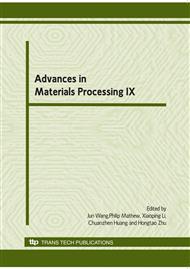p.308
p.314
p.318
p.324
p.330
p.336
p.342
p.347
p.353
Research on Five-Axis Dual-NURBS Adaptive Interpolation Algorithm for Flank Milling
Abstract:
In order to exploit the advantages of five-axis flank milling method for space free surface machining to the full, a definition of non-equidistant dual-NURBS tool path is presented first. On this basis, the constraint of velocity of points on the tool axis and the constraint of scanning area of the tool axis are deduced. Considering both of these constraints, an adaptive feed five-axis dual-NURBS interpolation algorithm is proposed. The simulation results show that the feedrate with the proposed algorithm satisfies both of the constraints and the machining time is reduced by 38.3% in comparison with the constant feed interpolator algorithm.
Info:
Periodical:
Pages:
330-335
Citation:
Online since:
June 2010
Authors:
Price:
Сopyright:
© 2010 Trans Tech Publications Ltd. All Rights Reserved
Share:
Citation:


